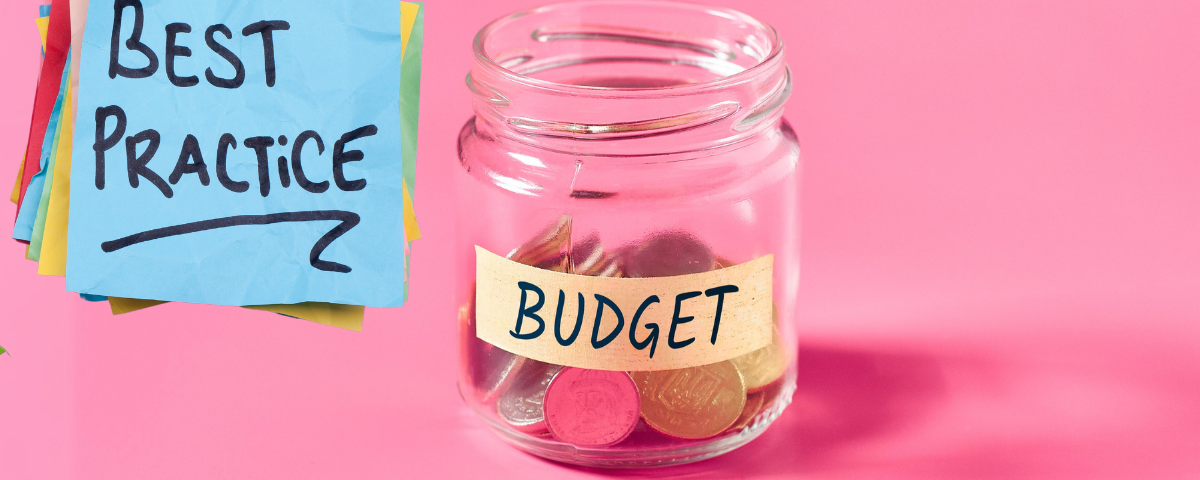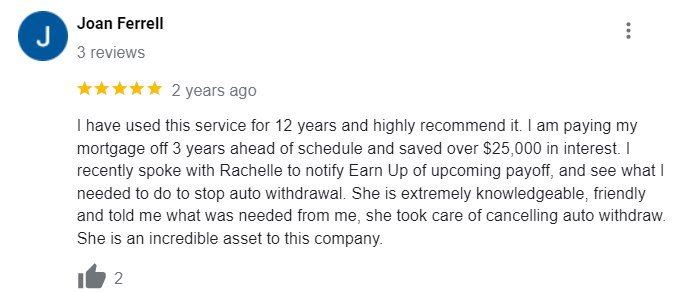Listen, we all know following budgeting best practices can be a real struggle. It’s like trying to stick to a healthy lifestyle while working in a bakery. But here’s the key: if we want to take control of our finances and actually have some money left at the end of the month, we need a budget. And not just any budget, but one that works for us!
We’ve all been there. We’ve tried every budgeting trick imaginable, from envelope systems to apps promising to do all the work. And guess what? Some of them actually work! But the real secret to budgeting success? It’s finding the right combination of strategies that fit our lifestyles and goals.
So, whether you’re a budgeting newbie or a seasoned pro, we’ve got you covered. We’ve rounded up 9 of the best budgeting practices out there – the ones that have helped countless people (including ourselves!) take control of their finances and start saving like a boss. Ready to dive into budgeting best practices? Let’s do this together!
Budgeting Best Practices: Choosing a Budgeting Method That Works for You
There’s a whole world of budgeting methods out there, from zero-based budgeting to the 50/30/20 rule. We’ve experimented with them all, and here’s the big takeaway: the best method isn’t universal. It all depends on your unique financial situation and personality.
Take the envelope system, for example. It’s a fantastic way to visualize your spending and keep it in check by physically allocating cash to different categories.
Zero-based budgeting, 50/30/20 rule, envelope system:
- Zero-based budgeting assigns every dollar a job, giving your money a purpose.
- The 50/30/20 rule offers more flexibility, allocating 50% of your income to needs, 30% to wants, and 20% to savings and debt repayment.
- The envelope system uses physical envelopes for different spending categories to promote mindful spending.
The key is to experiment and find the method that resonates with you. Don’t be afraid to combine elements from different approaches or create your own hybrid system. The best budgeting method is the one you’ll stick with in the long run!
Track Your Income and Expenses
Absolutely essential: tracking income and expenses is the bedrock of a strong budget. It’s like keeping a financial diary – you need to pinpoint how much money flows in and where it goes. Budgeting apps and spreadsheets simplify this process, allowing you to categorize spending and identify areas for potential cuts.
Gather past spending details, use budgeting apps or spreadsheets
To get started, gather your past spending details from bank statements and credit card bills, then plug those numbers into a budgeting app or spreadsheet. There are many options – find a tracking method that works for you and stick with it, as consistency is key!
Set Realistic Financial Goals
Setting financial goals is like creating a roadmap for your money. It gives you a clear destination and keeps you motivated, but remember: realistic goals are key. Unrealistic targets can lead to discouragement and derail your budgeting efforts entirely.
Short-term goals, long-term goals, SMART goals
Start by setting both short-term and long-term goals. Short-term goals are things you want to achieve in the next year, like saving up for a down payment on a car. Long-term goals are bigger picture, like saving for retirement or paying off your mortgage. Use the SMART goal framework to ensure your goals are Specific, Measurable, Achievable, Relevant, and Time-bound. It’s a great way to turn your financial dreams into concrete action steps. Remember, your goals don’t have to be set in stone. Life happens, and your priorities may change. The key is to regularly review and adjust your goals as needed.
Plan for Unexpected Expenses and Emergencies
Life loves to throw curveballs, so planning for unexpected expenses in our budget is crucial. We’ve all likely learned this lesson the hard way, like when a car breaks down unexpectedly. Without a buffer saved for emergencies, it can be easy to fall back on credit cards, leading to financial setbacks. To prepare for these unforeseen scenarios, building an emergency fund is key. Aiming to save 3-6 months’ worth of living expenses in a separate savings account creates a cushion. This way, if we face job loss or unexpected medical bills, we’ll have something to fall back on without going into debt.
Sinking funds
Another great strategy is to use sinking funds for planned expenses like car repairs, home maintenance, or holiday gifts. A sinking fund is a savings account that you regularly contribute to over time. By setting aside money each month, you’ll be prepared when those big expenses inevitably come up. The key is to make saving for emergencies and planned expenses a regular part of your budget. It may require some sacrifices in the short-term, but it will give you peace of mind in the long run.
Review and Adjust Your Budget Regularly
Budgeting is not a set-it-and-forget-it kind of thing. Your income, expenses, and priorities will change over time, and your budget needs to evolve with them. That’s why it’s so important to review and adjust your budget regularly. Sit down with your budget at least once a month to see how your tracking against your goals and make any necessary tweaks.
Monthly budget review, adapt to changes in income or expenses
During our monthly budget review, let’s compare actual spending to planned spending in each category. If we’ve overspent in one area, we can try to cut back in another to keep the overall budget on track. It’s also important to keep an eye out for any changes in income or expenses that might require adjustments to our budget. For example, if we receive a raise at work, we can allocate more money towards our financial goals. Or if our rent increases, we can look for ways to cut back in other areas to accommodate the higher expense. The key is to be proactive and flexible with our budget. Don’t be afraid to make changes as needed to keep our finances on track together.
Automate Your Savings and Bill Payments
Let’s leverage automation to our advantage! Automating savings and bill payments removes the temptation to overspend or forget a due date. This can be a game-changer for our finances. By setting our budgeting tools on autopilot, we take the emotion and decision-making out of the equation, ensuring our money goes exactly where it needs to each month.
Automatic transfers to savings accounts, bill pay services
Kick things off by automating transfers from our checking account to our savings account each payday. This “pay yourself first” approach ensures our financial goals are prioritized. We can also utilize bill pay services to automate recurring expenses like rent, utilities, and subscriptions. Most banks and credit unions offer this for free, saving us tons of time and hassle every month. The key here is finding the perfect balance between automation and flexibility. We want to guarantee bills are paid and savings grow, but also maintain some wiggle room for surprises or financial shifts.
Be Transparent and Accountable
Budgeting is not a solo sport. If you’re married or in a long-term relationship, it’s important to be transparent and accountable with your partner about your finances. Money can be a major source of stress and conflict in relationships, but it doesn’t have to be. By involving your partner in the budgeting process and finding an accountability partner, you can work together towards your financial goals and avoid any surprises down the road. Start by having an honest conversation with your partner about your financial situation and goals. Share your income, expenses, and any debts or assets you may have. Then, work together to create a budget that reflects your shared priorities and values. It’s also important to involve your children in the budgeting process, especially as they get older. Teaching them about money management and budgeting early on can set them up for financial success later in life.
Find an accountability partner
If you’re single or prefer to manage your finances independently, consider finding an accountability partner to help you stay on track. This could be a trusted friend, family member, or financial coach who can offer support and guidance as you work towards your financial goals. Having someone to check in with regularly can help you stay motivated and accountable to your budget. Plus, it’s always nice to have someone to celebrate your financial wins with. The key is to be open and honest about your finances, both with yourself and with others. By being transparent and accountable, you’ll be more likely to stick to your budget and achieve your financial dreams.
Continuously Educate Yourself on Personal Finance
Budgeting is a lifelong journey, and there’s always more to learn. That’s why it’s so important to continuously educate yourself on personal finance. We’re big believers in the power of financial literacy. The more you know about money management, investing, and financial planning, the better equipped you’ll be to make smart financial decisions and achieve your goals.
Read personal finance books, follow budgeting blogs, attend workshops
There are tons of fantastic resources available to learn about personal finance! We recommend checking out personal finance books like “The Total Money Makeover” by Dave Ramsey and “Your Money or Your Life” by Vicki Robin and Joe Dominguez. These books offer practical guidance and inspiration to whip our finances into shape.
Budgeting blogs like The Penny Hoarder and Budgets Are Sexy are also great resources. They provide relatable and practical advice on everything from saving money on groceries to conquering debt.
And don’t forget about workshops and seminars! Many community organizations and financial institutions offer free or low-cost workshops on budgeting, investing, and retirement planning. Attending these events is a fantastic way to learn from experts and connect with others on the same financial journey.
The key takeaway? Never stop learning! Personal finance is constantly evolving, and there’s always more to discover. By continuously educating ourselves, we’ll be better equipped to make informed financial decisions and achieve our long-term goals together.
Find the budgeting method that clicks with you, whether it’s zero-based or the 50/30/20 rule, and tweak it to fit your life. Keep a close eye on where every dollar goes with apps or spreadsheets. Set goals you can actually hit and review them as life changes. Always have money stashed for surprises and aim to save without thinking about it too much by automating savings and bills. Talk money openly with your partner or find a buddy to keep you honest. Never stop learning about how to manage your cash better.
Conclusion
Phew, that was a lot of budgeting talk! But here’s the important part: budgeting doesn’t have to be a complex or dreadful chore. By following these best practices, we can take control of our finances and make significant progress towards our financial goals.
Remember, the key is finding a budgeting system that suits us. Whether it’s the 50/30/20 rule, the envelope system, or a hybrid approach, consistency is key. And don’t be afraid to adapt our budget as we go – it should be flexible and reflect our evolving life and goals.
So, let’s give these budgeting best practices a whirl! Track our spending, set goals, and become savings superstars. With a little discipline and a lot of determination, we’ll be amazed at how quickly we can improve our financial situation. Trust us, our future selves will be incredibly grateful.










